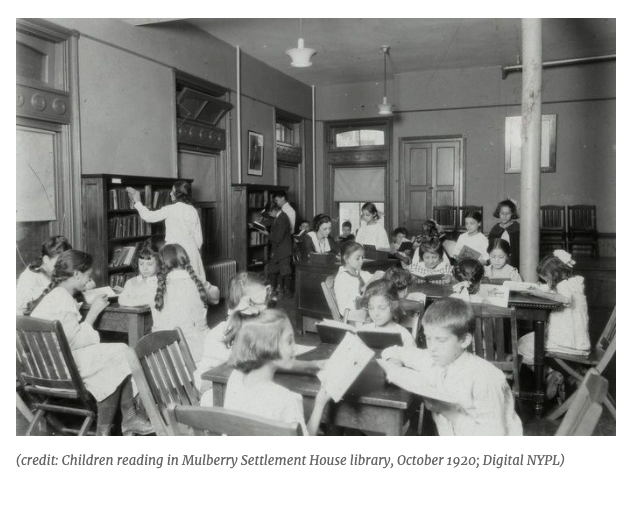This week, I spotlight Professor Muchowski and Professor Duddy’s Understanding the City, a “special topics course” that “offers an interdisciplinary approach to investigating the built environment.” The course is taught every year and asks students to engage in “on-site exploration and in-depth research” on New York City. The city’s vast concrete landscape becomes the classroom, and when we spotlighted this class in 2015, for instance, students had just visited and written about Vinegar Hill and the Farragut Houses.
Learning in such a course usually takes place in-place. Pedagogy entails a careful and embodied inquiry within the material world. How do students feel in different parts of the city? What memories do the smells and sounds invoke? What stands out when they observe public spaces like parks, or touristy spaces like DUMBO? What do they know about the history of the city’s different neighborhoods? Does learning this history change their perspective as they walk through these places? Full disclosure: I’ve taught similar place-based courses myself and find that exercises like walking tours and site visits are some of the most exciting tools for helping us all make sense of our world, not just through dialogue with one another but through direct observation of scenes unfolding in front of us. I spotlight this site this week to think through how such a course can be adapted to a pandemic world where it is not entirely safe to wander outside and where normal life–including for New York, a bustling tourist life–has not yet resumed.
What stands out in Professor Muchowski and Professor Duddy’s beginning of semester assignments is that they ask students to draw on memory: their first blogging assignment has students write about a public building or space in their neighborhood. Students describe watching these spaces evolve over their lifetimes and reflect on their experiences. The professors connect with students over the meaning of place by sharing their own ties to the sites students mention and describe, for example, exclaiming in (a blog) response: “I used to live at 98th and West End…there was a great playground at 95th where we would take our daughter.” Reading these blog posts and the professor-student exchanges in the comments is heart-warming, a reminder that, as different and isolated as our individual lives may sometimes be, especially in the current moment, place and memories of place give us a shared foundation.
Other assignments rely on observations of photographs of city spaces, such as the one included above. I’ll note quickly, as I have so many times before, what a great platform the OpenLab can be for sharing and commenting on such visuals. This is a different type of exercise than going directly to a space, but it also makes for more focused observation. Photographs capture snippets of people’s lives and focus the gaze on details of the built environment that might be overlooked in an exercise like a walk-through or field trip. Interpretation of these details is left to the viewer, and students responding on the blog reflect imaginatively on what they see, speculating about the sounds that fill the spaces captured–did the wooden chairs in the 1920 Mulberry Settle House library creak? Why are some of the students in this old photograph of the library smirking? Did someone tell a joke? What memories does the picture invoke? Again, the exercise is both thought-provoking and validating, helping plunge students back into the city they live in, its past and, by extension, its possible futures.
Does your course usually incorporate place-based learning? How are you adapting it to these virtual times? Join the conversation by replying to this post, and, in the meantime, don’t forget to visit the Understanding the City course site for inspiration!




